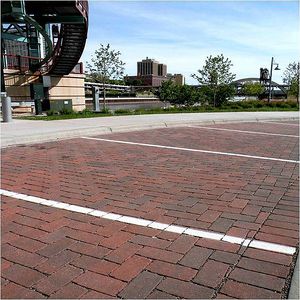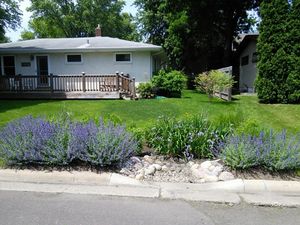
Category:Level 3 - General information, reference, tables, images, and archives/Images/Infiltration (trench/basin) photos
Infiltration Best Management Practices (BMPs) treat urban stormwater runoff as it flows through a filtering medium and into underlying soil, where it may eventually percolate into groundwater. The filtering media is typically coarse-textured and may contain organic material, as in the case of bioinfiltration BMPs. These BMPs are sites ranging from small to relatively large. They are primarily designed for removal of stormwater runoff volume and pollutants in that runoff. They are effective at removing total suspended solids (TSS), particulate phosphorus, metals, bacteria, nitrogen, and most organics. Soluble pollutants such as chloride and nitrate typically through these BMPs and into underlying groundwater.
This category contains photos for stormwater infiltration practices. Additional photos may be found on pages for specific infiltration practices, including the following.
- Permeable pavement
- Tree trench/tree box
- Bioretention - bioinfiltration
- Dry swale (Grass swale)
- High-gradient stormwater step-pool swale
Information on infiltration practices
Media in category "Level 3 - General information, reference, tables, images, and archives/Images/Infiltration (trench/basin) photos"
The following 17 files are in this category, out of 17 total.
- Bioretention photo 1.jpg 768 × 575; 92 KB
- Contech infiltration system in native sandy soils.png 1,432 × 1,067; 4.06 MB
- Failing BMP 1.jpg 816 × 612; 172 KB
- Filter strip before rain garden 1.jpg 1,000 × 750; 437 KB
- Filter strip for bioswale.jpg 1,125 × 635; 191 KB
- Finished basin with simple groupings of shrubs grasses and trees.png 1,428 × 1,069; 4.07 MB
- Infiltration basin 1.jpg 268 × 202; 10 KB
- Infiltration basin before planting.png 1,024 × 768; 2.1 MB
- Infiltration basin with rough grading complete.png 1,428 × 808; 2.64 MB
- Infiltration soil being carefully placed to avoid compaction.png 1,432 × 1,067; 3.64 MB
- Infiltration trench Lino Lakes.jpg 1,024 × 768; 821 KB
- Modular Block Sediment Trap.png 1,428 × 808; 2.9 MB
- Permeable pavement photo 1.jpg 724 × 543; 73 KB
- Ponding in infiltration practice 1.jpg 950 × 713; 127 KB
- Ponding in infiltration practice 2.jpg 608 × 456; 57 KB
- StormTrap underground storage vault for water stormwater reuse as irrigation.png 1,432 × 1,067; 4.3 MB
- Tree box photo 1.jpg 710 × 485; 62 KB
This page was last edited on 25 February 2023, at 14:24.


















